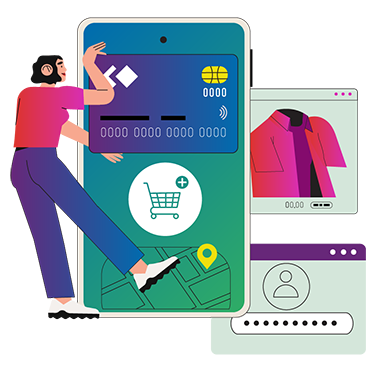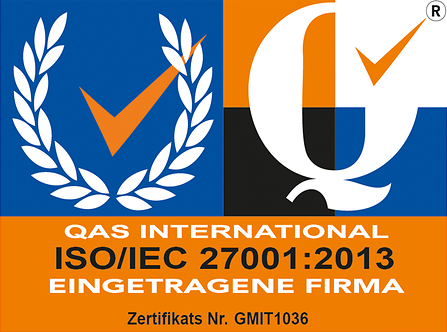I recently got back from DMEXCO – Europe's top trade show for digital marketing – where I had the chance to chat with top experts in the field.
The issue I've long wanted to discuss was whether the rumors are true: Is digital transformation really happening faster in the US than in Europe? Is America just that much better at innovation, particularly around eCommerce? And if so, why?
So I convened a panel of my favorite thought leaders in the industry: Jim Stirewalt, who recently joined me at CoreMedia after a long tenure at both SAP's Retail Group and IBM Watson Customer Engagement and Alexander Graf, CEO of Spryker and widely regarded for his influential blog "Kassenzone," which analyzes online strategy and eCommerce.
To set the stage, I started with some numbers. I wanted to highlight the astronomical sums that startups are fetching on the market, including:
- Chewy.com – acquired by PetSmart for $3.4B
- Jet.com – bought by Walmart for $3.3B
- Dollar Shave Club – purchased by Unilever for $1B
What's driving these insane valuations? What do US eCommerce companies know that we in Europe don't?
Needless to say, both Jim and Alex had some fascinating insights here. For example, Jim pointed out that America's consumer-driven economy – Americans spend nearly 2x what Europeans do online – really goes back to the country's founding and the idea of individual liberty.
On the other hand, Alex pointed to the different management culture here in Europe, where there is often less appetite for risk-taking around investments for companies without a well-proven business model.
Good stuff, but that's just a sampling. The whole panel is well worth a watch. And I would love to hear your thoughts.
https://www.youtube.com/watch?v=FrfmspAXhP8
Transcript
00:00:00
Knud Kegel: Then I ask Jim and Alex to join me on stage. So we have a.
20 minute session here and just waiting for some more people to join us. I will
slowly start it. In case you are not sure where you are. This is a panel about.
E-commerce in general from a global perspective and the belief we have in
Europe that you ask is so much faster and. Really drives. How to do online
business. And I think the main reason. Why this is some. Ideas I will pitch
here and then we use you to experts to go a little bit deeper and see what it
is. So our first expert is Jim Jim is our current acting general manager for
North America. But he has a long agency background and then he was also with SAP
retail and afterwards for IBM customer engagement and that on a global
perspective. So he knows a lot of large retailers. He worked with a lot of pure
online players and brings in this All American perspective. Welcome Jim. Thank
you. And on the other side for the German perspective we have Alexander Graf. Alex's
famous expert for e-commerce with his block kassenzone.de which is all about
e-commerce strategy eCommerce. Why people are surviving or not so good in
e-commerce. But he is also co-founder and acting CEO of Spryker, which is just
across the aisle and this is why he made a long long way for all especially
you. Thanks Alex for joining.
00:01:49
Alexander Graf: Thanks for the invitation. This is the most impressive conference
stage on a booth here in this hall.
00:01:58
Knud Kegel: Thank you. So. Just a little intro from me to get started.
So we all know America is a country of big unbelievable opportunities and we
see all the big news what's going on there. And we also in e-commerce we have
the biggest exits there with Amazon and Zappos. So it's it's really big big
business over there and showing numbers, we are not really used to here in
Europe like just recently it was we PetSmart acquisition of chewy. It was just
I would say pet supply and be a little bit dog food.
00:02:45
Jim Stirewalt: But it was billions of dollar business and no one
mentioned that they have cat toys too.
00:02:46
Knud Kegel: Ahh, okay. They one thing that was a pretty famous moment was
the acquisition of Jet.com which was also several billions or like Dollar Shave
Club which really disrupted an industry and then actually was acquired by
Unilever. And. So we see the opportunity there and when we look into the per
capita spend we actually see that in the US people spend three times as much
than we spend a year in Germany online. Yeah. While in general it's both really
leading economies. People have money to spend. People like shopping but
something seems to be. Different in the U.S. compared to Europe. And. So the
thing is is it just a faster transition or as a just a different market. And so
it's really what has been a transformation. Driving in the U.S. versus Europe.
And maybe Jim you have some thoughts. Why you think U.S. is kind of ahead. We
have seen many other countries and then we will use Alex insights.
00:03:58
Jim Stirewalt: Well I think the question that I think we're seeing a
transformation it's. Going now beyond the U.S. prior to my time running global
sales at Watson customer engagement for IBM. I traveled around the world a lot
and I saw a lot of the same disruption happening in different cultures and
different companies. They were a little bit different though right. You look at
India. It's all about mobile right. So a massive transformation is occurring of
how customers are buying. The one thing that is leading this that's been a
bellwether within the US and this actually goes back well before even the
creation of the Internet. And it's a consumer driven economy. I mean you can go
back to the founding fathers and it was about the individual it was about the
the. The person on the street. And. Quickly. Culturally something created which
is it's about me. I know what I want. I know when I want it I want it now. And so
it becomes a very consumer. Focused oriented culture. Yeah. Now I'll say
something that I think what has helped accelerate that within the Yes and again
I don't think the U.S. has the corner I'd like owns this by itself. It's
certainly manifested itself in some of these valuations that have occurred.
Some of these transactions that have occurred but it's rooted in an aggressive
nature and a higher risk taking. Posture. And it's been fueled. By two words.
Silicon Valley. Or you could say Palo Alto and all of this I guess you'd call
it. The. Growth Capital. Has found a way to get to these investments faster. To
grow these companies faster so just the the. The. Pure. Aggression that's been
focused in focusing this capital. Faster and more aggressively I think has
helped. Take that and turn it into gain and for these companies. And it's been
obviously then. Driven by this consumer oriented culture. So again it's
spreading globally. We have three billion people between China and India. That
is being unleashed that same kind of aggressive capital investment mode you're
going to see that really impact the global economy.
00:06:24
Knud Kegel: OK. So Alex do you think that's the main difference. That's
really on one hand the aggressive early shoots amount of money and then this
kind of shopping attitude or do you see other kind of factors coming in there.
00:06:52
Alexander Graf: So if you look at the sheer data and compare like what
kind of successful companies in the digital space are in the U.S. and what are
in Germany it became clear that the approach of the American way was much more
successful. Though I think the reasoning behind this is not just only pure
customer focus. I think that's. What still B2C and B2B companies are learning
from Amazon and the likes. But what is
more important is that I think the management structures in the European market
especially the German markets is very different from what I've seen and in U.S.
companies. So if you're looking into if you're looking into the educational
background of German companies even like big companies how people decide or
come to decisions. They have been very successful and in environments where
they just scale an existing business model where they have been presented like
five options which they could choose from. And each option has like a a pro
list economist as and spend plan and like a probability winning probability and
then usually they've chosen something that was in the middle. So now the
problem is additional opportunities. We have like not only five options you
have probably like 20 or 30 options none of the options has like a winning
probabilities No just don't know what works and if it works if there will be a
payback and if there will be a payback how big it is. So now it's like the old
the capability the management capability the that let's say many German
companies was optimized for this. McKinsey. Boston Consulting Group approach.
Yeah. So that options police now decide what kind of money you want invest.
Yeah. And I always like to share options so you need to be like kind of an
optimism optimist could choose from let's say let's go rather with left options
or rather alive. Right. Options. There is no to it set which you can apply for
those options.
00:08:38
Alexander Graf: So essentially what we are saying right now on digital
is that all you've learned in business administration studies is kind of
worthless. And I think for like American management style that's easier to
apply its mind. It's might. You can follow now a little bit your gut feeling
it's like very very customer focused and feel like if I talk with German
companies about the options. OK. Now then let's please optimize and make. Let's
let's make all digital options just cheaper because you can't decide which are
better. The answer is usually Yeah cheaper is good. But Mr Goff still you have
to say yes which option I should took and that's I think is one of the main
differences.
00:09:19
Jim Stirewalt: Well it's maybe the German way of dealing with uncertainty.
It's very German right. Very process oriented. Now I will tell you that I know
a company very well a German company that has. Taken a different approach. SAP.
Go back 15 years. They made their decision on the roadmap very similar to what
you just described. You know how they make their decision on the roadmap today.
It's called a slug. It's their users group. Yeah. Literally their users group
defines what that product is going to be. There's they certainly do market
evaluation and do all the term things they would do but ultimate if you look at
S&P it is a company that isn't braced. And I hate to call it the American
way because it sounds so. I don't know. I don't like it but they've taken that model
and SAP has gone to the squad and I think the very sad thing right now what is
happening is that if it becomes more and more clear the debt the way to go like
pure customer focus in the SAP Case it's like B2B software customers even
though they are one of our main competitors. But it's a good way to go and and
it's clear that you have to take a lot of bets and you need to calculate in
your your whole function that some of these debts will be very expensive and
will not work out. So and even though it became clear now just by empirical
data. Even if I go now to other gem and let's say to the next as AP or to buy
us off or to other companies and even explain them that way. That's how it
works right now. All the people there will not with a head and say yeah. That's
just that's the way we should go. That's how we should act. Please Mr. Graff.
Show me these three options I should I should go with.
00:11:11
Alexander Graf: That's still the issue that's still being on now. Yes,
sorry Jim.
00:11:14
Jim Stirewlt: No I just want to throw it this is great dialogue and I'm
interested Alex in your perspective of something I call creative destruction.
We talk a lot about just disruption. Something I think we've seen a lot of
within markets is this destruction. Look at Uber air being be new ways to
consume. Purchase things to service services like home markets and industries
have been upended. Those didn't happen by doing what you're talking about
right. By looking at all your different apps. So how do you find a little bit.
They literally. Destroy it and they start with something new.
00:11:59
Knud Kegel: Yeah. But isn't it at the end just the pure money that
actually enables these kind of options.
00:12:08
Jim Stirewalt: No no. It's the idea. It's in if you have. Now you it's
chicken or the egg because you still have your capital right. But it is the
route. The genesis is the idea that you have a market that's addressable and
that has a buying base right. Yes. That will fuel the money that will fuel
that.
00:12:27
Alexander Graf: I think it do. I think it was a money late related
question like 10 years ago when Silicon Valley started. But like in the low
interest rate phase we are right now for 10 years so money is especially for
bigger companies. It's available super super super cheap and like a bigger
bigger company like Siemens issued the bond I think last week with we negative
interest like a company so they can literally raise hundreds of billions more
or less as a settlement and build stuff but they don't know how to deploy it
and let's take the uber examples or I'm living in a small city called Kiel in
Germany and there was no Uber or MyTaxi around for four and then MyTaxi was
introduced though the EPA's not available in queue since 6 months and that was
like the community of taxi drivers asked by the local newspaper. Do you think
that's a threat or not. And. It was clear what how successful it's now the
citizens committee of Taxi Driver said no. We don't see a big market
potentially in Q because our customers say they shop local and then it's. So I
think this explains a lot like the. It's more like an attitude kind of thing
it's not money related it's not strategy it's it's really how you do it and not
what you do. And then that's also like the main difference. Because that was
the penalty question. Yeah. In the U.S. and Germany. That's really bad.
00:13:46
Knud Kegel: And just one other aspect we see it's actually the size of
the addressable market. So U.S. is pretty strong and you know we have it for
restaurants and everything. One thing that works get scaled out immediately to
an unbelievable amount of copies of that. Yeah. And so how is it here from your
experience. Alex in Germany, being a decent European market. You know it's like
France U.K. it's it's pretty good markets but of course it's not the same level
like the U.S. that you reach 400 million people without any policy you see
that's still a limit or I think that's the limit for capital B2C business models
where you need economies of scale though that help you monitor growth and in a
lot of B2B businesses that's not necessary.
00:14:28
Alexander Graf: And then there is no European market at all. So I was often
asked by U.S. companies if I know what should be our go to market strategy
Europe and then we have to explain there's no common market. You have to decide
what is your core customers. Are they in Germany or the UK either in France and
you have to go market by market so. If you're like in a business environment
where where you can where you can create local economies of scale that
protects. It protects you from your competitors that's good enough. If you're
in a market B2C driven market you are an economy of scale that are globally
related. That's very hard to achieve in Europe but. Then again. We don't have
to look into Silicon Valley. Now we have to look to China where other providers
are in local markets that are. Just in the Shanghai area alone. They are like
living 80 million people like all over Germany. Exactly this market can prove
much faster than the whole American market. It's like a new social media
application will work. We'll work on it. That's where the ammunition comes from
but it depends on the bit what kind of business you want to be. There's enough
advantages in the German market that you can apply to your business. Yeah.
00:15:38
Knud Kegel: So it's not as limiting as attitude you would say, right?
00:15:41
Jim Stirewalt: No. Do you see direct to consumer impacting the European
market in the U.S.. It's been interesting dynamic that we've watched occur. And
they're quite a dichotomy. One of them is the surge it's a bricks and mortar
right. Look at Amazon buying whole foods. We know that Millennials are
skeptics. They want to touch it and see it. Let's say purchase of a electronic
device or find clothing or couch for your living room. So bricks and mortar. Is
probably more relevant than we ever thought it would be. Probably 15 20 years
ago we thought. Bricks and mortar is dead. Everything we buy is going to be
online. Not true. Look at the resurgence of I mean amazing retail experiences.
I don't know if you have ever seen a Restoration Hardware. If you come to the
states you should visit the restoration hardware. It's really an experience
right. But it's also matched online so it truly is this full 360 degree
customer experience right. So you have that occurring but similarly on the
other side is this huge growth that's occurring in the direct to consumer Warby
Parker. Undone watches custom watches for three hundred dollars built to your
specifications on a Web site. Custom jeans. From Mott and Bo and all these
other things direct to consumer and I find that an interesting dichotomy and
I'm interested from your perspective. Sorry I don't mean to be interviewing
your last year it's your guides. Do you see the similar dynamics and do you see
direct to consumer in Europe?
00:17:24
Alexander Graf: Maybe being away through some of these localization
issues that you were talking about not as in the US so if discussing a lot
these opportunities all of these options that we have that we see from the US
market how that can be applied to the German economy. But most businesses are
way behind there are a couple of business to do like a very very good job by
focusing on just one channel so maybe a brick and mortar tenant or the online
channel but we don't see economies or we don't see businesses doing the same
thing like you described. I don't see them. They might be like. Some businesses
that do a good way but this is a small small example. It can't be taken for
like a best practice case like the bigger parts of the industry and that's
still an issue again here. Even though Amazon or that under or whatever it's
successful you can't apply this old best practice approach by just copying them
into you like business because when you are life with the alleged new version
of your business then it's already outdated. It's. Again here it's only a how
question how how they evolve and a lot of like. Classic approaches old
approaches failed. I don't think the cool thing now is and I think that's why I
most particularly trust it is in this discussion here. Now it became clear now
it's not now it's not virtual anymore. It became clear that old strategies
failed old message fear and now the management knows it. And now they need to
act. And that was different like two three four or five years ago.
00:18:59
Knud Kegel: Yeah. So there's definitely this change of moral let's say
consciousness about where companies are and change but also like here in
Germany we have a lot of these good old retailers brick and mortar stores
seeing online just as a channel and. Being very careful for many many years
and. Now the kind of. Numbers prove them wrong. So they are trying to catch up.
So what we see in the US is that a lot of the good old brick and mortar stores
are very successful online as well. And we don't see it to the same extent
here. So do you think it's. Just a little bit lagging behind and it will come
here as well. Or are they kind of too late actually to make that happen?
00:19:40
Alexander Graf: Yeah it's too late. It's just not so possible. The the
the level of excellence you have to achieve just to fulfill it like the. The
DVD the B hygiene barrier to to do when it comes to like online experience is
already so high that even with luck it's a two or three billion dollar B to C
retailer. It's too late. You just can't hire people fast enough so the
competition never go to high so you need to use your now. You need to go now
with a couple of partnerships. All you have to partner with would not be what
the. Nets become like the Knicks the land No.4 whatever needs industry on our
own by investing let's say 100 million 20 million but that it's too late.
Definitely.
00:20:30
Jim Stirewalt: But to be fair some of the American reach bricks and
mortar retailers. They had those same struggles right. And. As some of them
learn faster than others. Others didn't give up and have established a pretty
healthy online business. Target is a good example of one right. They first came
out they tried to fulfill it all their own. And then they realized their best
bet even though it was going to cut into their margin was to use a three people
a third party. Right. So I would encourage European companies that feel like
they missed the boat. If they have a addressable market that has customer
loyalty it's worth that jump to that that business model. Yeah definitely about
the most German companies that are now sitting on.
00:21:16
Alexander Graf: Already failing brick and mortar business models are
trying to transform the fading model into online and let's not working out not
even the USO not off like cases Nordstrom Macy's. Yeah it's not working out
from a peanut perspective at all.
00:21:31
Jim Stirewalt: Yeah I know but I think the one global trend we see is
the idea of omni channel not because you wear kind of a classic brick and
mortar but really actually also more and more pure online players opening the
brick and mortar shops more this idea of pop up shop right. So you basically
still have one Shetland which is online but physical is kind of part of that
right. So it's more driven meant that we are back to control an attitude so
it's driven by that online for us attitude and the physical channel follows.
Because at the end it's a lot of physical products. And we still see a lot of
people who like to touch things. At least from time to time right.
00:22:09
Alexander Graf: Yeah but it's not like it's not like the main rescue
channel though. For me it's like an educator if like a company I'm invested in
like on the Stock Exchange. It's investing in brick and mortar like a form of
you online. I said all this talk. At once so that's usually like it's a it's
just a sign that a day they run out of ideas how to grow bigger like Amazon
market. Yeah same their own result.
00:22:33
Jim Stirewalt: I don't know that a lot of people would say that their purchase a whole foods though when it happened people were like why why would you buy a grocery store. Well because they wanted to have locations near their customers to be able to distribute perishable goods. Right. So is a totally different business model. Yeah. So what's interesting is it's also provided a link to Amazon to where you can go take your returns back to. Right. So I think physical work physical beings as much as we live in a digital space. We still want to touch things. We want that people in our neighborhood in the United States. And I live in. We call it X Serbia kind of suburban. America. The amount of banks that are being built within a mile and a half of my house is unbelievable. I mean there's six new banks branches. Because I could do business just as easily. Matter of fact I do all my banking with my bank online but they believe they need a physical presence that you can see. So. It's going to be interesting as this plays out. Yeah. One thing that I think this is a little bit of a plug for some recent writing that our CEO Soeren Stamer did. Which is about being agile fast and iconic, right. And it's interesting as I was kind of preparing to have this chat. I was thinking that really that really applies to this conversation because if you look at not just in the United States but globally the companies that are going to succeed. Have that. Yes they have the ability they have agility meaning they're able to move quickly make decisions. And then they're able to do it with speed. But the one thing they all have in common is they are a very recognizable iconic brand. There's something about it that's one thing I love about Spryker. You have a very iconic image. I mean you've got a tattooed on yourself right. I mean you couldn't be any more iconic than that right. So I think those three things I think are really good guideposts for us. And so I'd encourage anybody. It's a really nicely written it's a brilliant. Now I'm not just plugging him because he's my boss but I'd encourage everybody to read that blog it's worthwhile.
00:24:53
Knud Kegel: Yeah I think this film was actually perfect summer region
because we kind of agree but is this different yeah. So there was no dispute.
Germany ruled the world and how to do online transformation. The US has
something. And it's at the end its attitude. It was the money in the beginning.
So this is how it started where actually a lot of risk taking and attitude was
shaped and also scale. But now money is a global thing. It's free or actually
you get paid if you take it. So at least some people believe in you. You can
actually do all kinds of things. And this brings us again to attitude and
culture. Cause when you're iconic and you're fast then you will also get for
money and then you will find the addressable market. So if this guys thanks a
lot for being here and just a little reminder it's just one hour left and then
we will have Vladimir Kaminer here for a Russendico and wodka shots - hope to
see you later.















